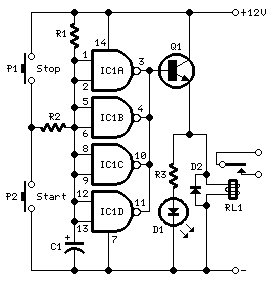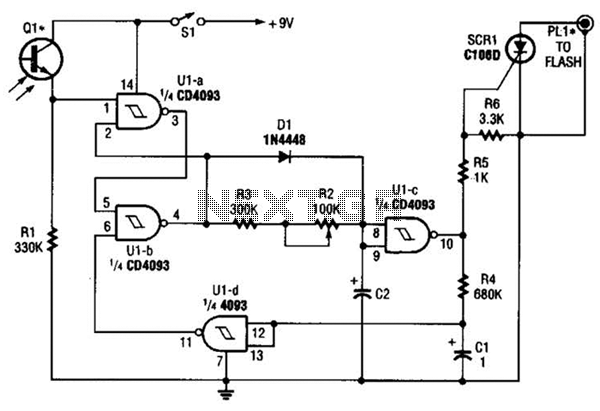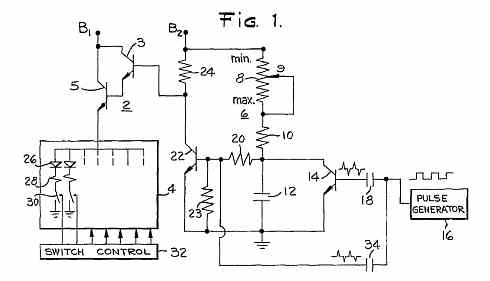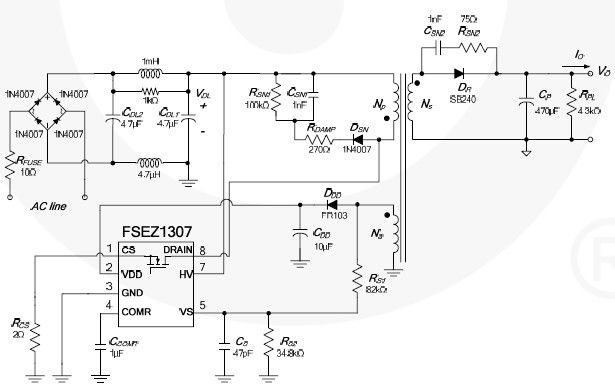
Mains undervoltage overvoltage protection circuit

The circuit employs a transistor control mechanism. When the grid voltage is within the normal range, relay KA is activated, supplying power to the load. If the grid voltage falls below the minimum allowable threshold (adjustable via potentiometer RPz) or exceeds the maximum allowable threshold (set by resistor RPi), relay KA is deactivated, disconnecting the power supply to the load.
The described circuit functions as a protective relay system designed to monitor and control power supply to a load based on grid voltage levels. The core component of this circuit is a transistor, which serves as a switch that controls the operation of relay KA.
In normal operation, when the grid voltage is stable and within the predefined limits, the transistor is biased appropriately, allowing current to flow through its collector-emitter path. This action energizes relay KA, which closes its contacts and connects the load to the power supply.
The circuit includes two adjustable resistors: RPz and RPi. RPz is used to set the minimum allowable voltage threshold, while RPi establishes the maximum allowable voltage threshold. These thresholds can be fine-tuned according to the specific requirements of the application.
When the grid voltage drops below the set minimum (as determined by RPz), or rises above the set maximum (as determined by RPi), the transistor's biasing conditions change, causing it to turn off. This action deactivates relay KA, opening its contacts and cutting off power to the load to prevent damage from overvoltage or undervoltage conditions.
The implementation of this circuit enhances the reliability and safety of electrical systems by ensuring that loads are only powered when grid voltage is within acceptable limits. Additionally, the use of a potentiometer allows for easy adjustments to the threshold values, providing flexibility in various applications.It uses a transistor control circuit. When the grid voltage is normal, relay KA pull, turn the power load. When the grid voltage is below the minimum allowable value (can be set by the potentiometer RPz), or higher than the maximum allowable value (by RPi setting), KA is released, the load can be cut off the power supply.
The described circuit functions as a protective relay system designed to monitor and control power supply to a load based on grid voltage levels. The core component of this circuit is a transistor, which serves as a switch that controls the operation of relay KA.
In normal operation, when the grid voltage is stable and within the predefined limits, the transistor is biased appropriately, allowing current to flow through its collector-emitter path. This action energizes relay KA, which closes its contacts and connects the load to the power supply.
The circuit includes two adjustable resistors: RPz and RPi. RPz is used to set the minimum allowable voltage threshold, while RPi establishes the maximum allowable voltage threshold. These thresholds can be fine-tuned according to the specific requirements of the application.
When the grid voltage drops below the set minimum (as determined by RPz), or rises above the set maximum (as determined by RPi), the transistor's biasing conditions change, causing it to turn off. This action deactivates relay KA, opening its contacts and cutting off power to the load to prevent damage from overvoltage or undervoltage conditions.
The implementation of this circuit enhances the reliability and safety of electrical systems by ensuring that loads are only powered when grid voltage is within acceptable limits. Additionally, the use of a potentiometer allows for easy adjustments to the threshold values, providing flexibility in various applications.It uses a transistor control circuit. When the grid voltage is normal, relay KA pull, turn the power load. When the grid voltage is below the minimum allowable value (can be set by the potentiometer RPz), or higher than the maximum allowable value (by RPi setting), KA is released, the load can be cut off the power supply.





